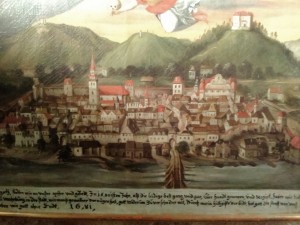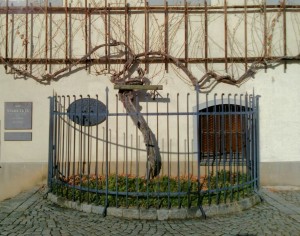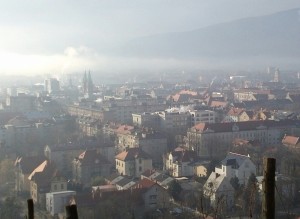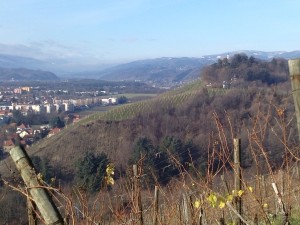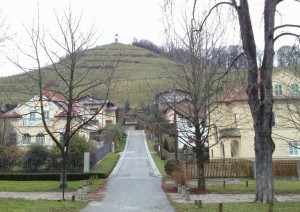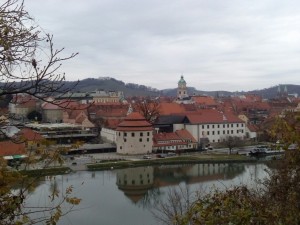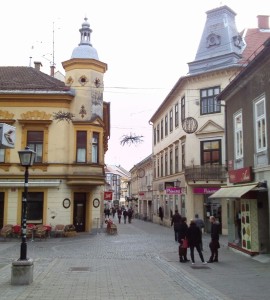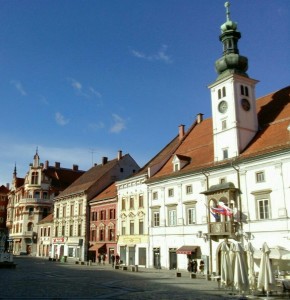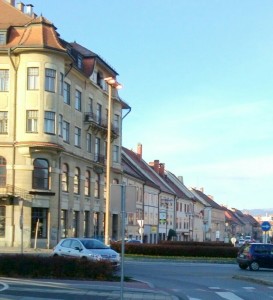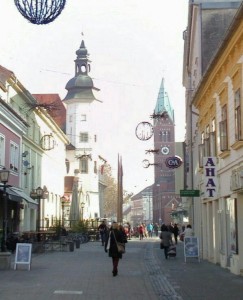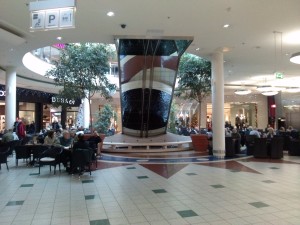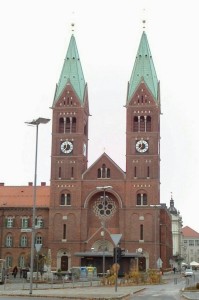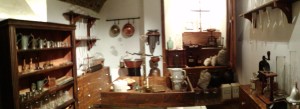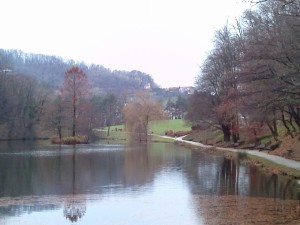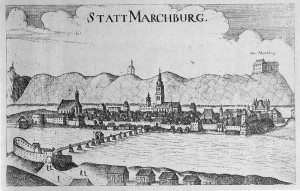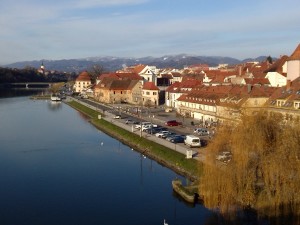Travelled very comfortably south from Vienna on the intercity (IC) train. A picturesque trip through the mountains. Stopped just over the border in Maribor, second largest city in Slovenia.
Besides three and a half hours on the train being enough, I wanted to stop here to pay homage to the oldest producing grapevine in the world, reckoned to be around 450 years old.
My guide book says that the town is “embraced in its wine growing hills”. I would have said it was squeezed between the Drava river and the foothills. Here in the early morning river mist.
But it is certainly true that the city stops and the vines begin.
In a few hours I have left Beer country and re-entered wine country.
My guide at the regional museum told me that this is one of the oldest wine growing regions in the world and that the Romans learned wine making here and took the knowledge to France, Spain, etc. The ones I tried are pretty good. Characteristically light and bright with fruit.
Surprisingly small, the city has a nice old town.
There are some very large restaurants in the old town, quiet now off season, but I expect full of tourists setting outdoors in the summer.
Unfortunately, like many towns in the world today, while the mall is crowded with shoppers
the downtown is not prospering and has too many shuttered store fronts and gritty avenues. But I am sure that summer sunshine and good low cost food and wine would gloss over much of this.
The old town is full of students, (all) night and day, providing a rollicking, lively ambiance.
They have some nice buildings,
A good regional museum in the old castle,
And a beautiful city park.
I have written more than once this fall about the turbulent and bloody history of the Balkans. Mostly about ancient armies clashing in the distant past. Surely Maribor had those, siege by the Turks, etc. etc. But this town has also endured ongoing tragedies just over the past 100 years.
This was a predominantly German city up until WWI.
But during that war the Austrian/Germans rounded up Slovenes and put them into detention. The resentment that built up prompted the Slovenes after the war to “persuade” the German population to leave the city.
Then in 1941 the Nazis swept in. I took this picture from the spot on the old bridge where Hitler stood and declared that the region would once again be German.
So throughout WWII Slovenes were rounded up for slave labor and death camps. The Nazis converted the heavy industry here into armament manufacture, and so the Allies targeted it with repeated air attacks. Maribor has the distinction of being the most bombed city in Yugoslavia.
After the war ended the Yugoslav army rounded up the collaborators, the “home guard” and their families and deposited them into mass graves around the city.
And so I really hope for those rollicking students in the old town to bring about a better future for this place.
Tomorrow I continue south to the “pint sized capital of Slovenia”: Ljubljana.
